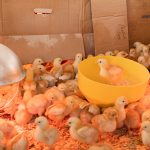One of the most crucial aspects of keeping animals cool in hot weather is providing adequate shade and shelter. This can be accomplished through natural shade from trees or by constructing shelters such as barns, sheds, or awnings. Animals should have access to these shaded areas throughout the day, particularly during peak heat hours.
It is essential to ensure that the shade is well-ventilated to promote air circulation and prevent heat accumulation. Furthermore, providing bedding or insulation in the shelter can help animals stay cool by creating a barrier from the hot ground. The type of shelter provided is also an important consideration.
Animals with thick fur may benefit from shelters with reflective roofing to minimize heat absorption, while those with thinner fur may require shelters with good insulation to maintain cooler temperatures. The size of the shelter in relation to the number of animals it will accommodate is another critical factor. Overcrowding can lead to increased body heat and stress, so it is vital to ensure sufficient space for all animals to comfortably seek shelter.
Table of Contents
- 1 Keeping Cool Water Available
- 2 Adjusting Feeding Schedule
- 3 Monitoring for Heat Stress
- 4 Ensuring Proper Ventilation
- 5 Managing Insect Control
- 6 Implementing Dust Baths
- 7 FAQs
- 7.1 What are some tips for keeping chickens cool in the summer?
- 7.2 How can I prevent heat stress in my chickens during the summer?
- 7.3 What are some signs of heat stress in chickens?
- 7.4 Should I adjust my chickens’ diet in the summer?
- 7.5 How can I protect my chickens from predators during the summer?
Key Takeaways
- Providing shade and shelter is essential for protecting animals from the sun and heat
- Keeping cool water available at all times helps animals stay hydrated and regulate their body temperature
- Adjusting feeding schedule to cooler times of the day can prevent heat-related digestive issues
- Monitoring for heat stress symptoms such as panting, drooling, and weakness is crucial for early intervention
- Ensuring proper ventilation in animal housing areas helps to maintain a comfortable and safe environment
Keeping Cool Water Available
Access to Cool, Clean Water
Animals can quickly become dehydrated in hot weather, so it’s essential to ensure they have access to cool, clean water at all times. Regularly checking and refilling water sources throughout the day is crucial to prevent dehydration.
Keeping Water Cool
In addition to providing enough water, it’s also important to keep the water cool to help lower the animal’s body temperature. This can be achieved by using shaded water troughs or adding ice to the water.
Considering Animal Preferences
It’s also important to consider the type of water source provided. For example, some animals may prefer to drink from a trough, while others may prefer a shallow dish or a running water source. Understanding the preferences of the animals in your care can help ensure that they are drinking enough water to stay cool and hydrated.
Monitoring Water Intake
Additionally, it’s important to monitor water intake and be aware of any changes in drinking behavior, as decreased water consumption can be a sign of heat stress or dehydration.
Adjusting Feeding Schedule

In hot weather, it’s important to adjust the feeding schedule for animals to help them stay cool and comfortable. Feeding animals during the cooler parts of the day, such as early morning or late evening, can help prevent them from overheating while digesting their food. Additionally, feeding smaller meals more frequently throughout the day can help prevent animals from becoming too hot and lethargic after a large meal.
It’s also important to consider the type of feed provided during hot weather. Feeding high-fiber, low-protein diets can help reduce the heat produced during digestion and prevent animals from becoming overheated. Additionally, providing access to fresh, juicy fruits and vegetables can help keep animals hydrated and provide essential nutrients during hot weather.
It’s important to monitor feeding behavior and adjust the feeding schedule and diet as needed to ensure that animals are maintaining a healthy body temperature.
Monitoring for Heat Stress
Monitoring animals for signs of heat stress is crucial in hot weather. Some common signs of heat stress in animals include excessive panting, drooling, lethargy, and loss of appetite. It’s important to regularly check on animals throughout the day and be aware of any changes in behavior or appearance that could indicate heat stress.
Additionally, monitoring body temperature with a thermometer can help identify animals that are at risk of overheating. In addition to monitoring individual animals, it’s important to be aware of environmental factors that can contribute to heat stress. For example, high humidity can make it more difficult for animals to cool down through panting, so it’s important to take this into consideration when assessing the risk of heat stress.
It’s also important to be aware of any changes in weather patterns or extreme heat events that could increase the risk of heat stress for animals in your care.
Ensuring Proper Ventilation
Proper ventilation is essential for keeping animals cool in hot weather. Good air circulation can help prevent heat from building up in shelters and barns, as well as provide a cooling breeze for animals outdoors. This can be achieved by strategically placing fans or vents in shelters and barns to promote air movement and prevent stagnant air from trapping heat.
In addition to mechanical ventilation, natural ventilation should also be considered. This can include strategically placing shelters and barns to take advantage of prevailing winds, as well as providing open windows or doors to allow for cross-ventilation. It’s important to regularly check ventilation systems and make any necessary repairs or adjustments to ensure that they are functioning properly and providing adequate air circulation for animals.
Managing Insect Control

Chemical Control Methods
This can include using insect repellents, fly traps, and insecticides to reduce insect populations around animal housing and grazing areas.
Natural Insect Control Options
In addition to chemical control methods, it’s essential to consider natural insect control options that are safe for animals and the environment. This can include planting insect-repelling plants around animal housing and grazing areas, as well as using natural predators such as birds and beneficial insects to control insect populations.
Preventative Measures
Regularly cleaning and removing manure and other organic matter can also help reduce insect breeding grounds and prevent infestations.
Implementing Dust Baths
Dust baths are an important part of keeping animals cool and comfortable in hot weather, especially for poultry and small mammals such as rabbits and guinea pigs. Dust bathing helps animals remove excess oils and moisture from their skin and fur, which can help them stay cool and prevent skin irritation. Providing a dust bath area with fine dust or sand can help animals maintain good hygiene and reduce the risk of heat stress.
It’s important to regularly clean and replenish dust bath areas to ensure that they remain effective at removing oils and moisture from animal skin and fur. Additionally, providing access to shaded dust bath areas can help prevent animals from becoming overheated while dust bathing. Monitoring animal behavior and appearance can help identify any issues with dust bathing behavior or signs of skin irritation that may indicate the need for adjustments to dust bath areas or bathing materials.
If you’re looking for tips on how to keep chickens cool in the summer, you might want to check out this article on 10 Ways to Keep Your Chickens Cool in the Summer. It offers practical advice on providing shade, proper ventilation, and other strategies to help your chickens beat the heat.
FAQs
What are some tips for keeping chickens cool in the summer?
Some tips for keeping chickens cool in the summer include providing plenty of shade, ensuring access to fresh, cool water at all times, and using fans or misters to help lower the temperature in the coop.
How can I prevent heat stress in my chickens during the summer?
To prevent heat stress in chickens during the summer, it’s important to provide good ventilation in the coop, avoid overcrowding, and offer frozen treats or ice blocks for them to peck at to help lower their body temperature.
What are some signs of heat stress in chickens?
Signs of heat stress in chickens can include panting, lethargy, decreased egg production, and in severe cases, collapse or death. It’s important to monitor your chickens closely during hot weather and take action if you notice any of these signs.
Should I adjust my chickens’ diet in the summer?
It’s a good idea to adjust your chickens’ diet in the summer by offering more fresh fruits and vegetables, which have a higher water content and can help keep them hydrated. You can also consider adding electrolytes to their water to help replace any lost minerals due to heat stress.
How can I protect my chickens from predators during the summer?
To protect your chickens from predators during the summer, make sure their coop is secure and that any outdoor areas they have access to are also well-fenced and predator-proof. Consider using motion-activated lights or sound deterrents to scare off potential predators.
Meet Walter, the feathered-friend fanatic of Florida! Nestled in the sunshine state, Walter struts through life with his feathered companions, clucking his way to happiness. With a coop that’s fancier than a five-star hotel, he’s the Don Juan of the chicken world. When he’s not teaching his hens to do the cha-cha, you’ll find him in a heated debate with his prized rooster, Sir Clucks-a-Lot. Walter’s poultry passion is no yolk; he’s the sunny-side-up guy you never knew you needed in your flock of friends!







